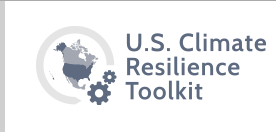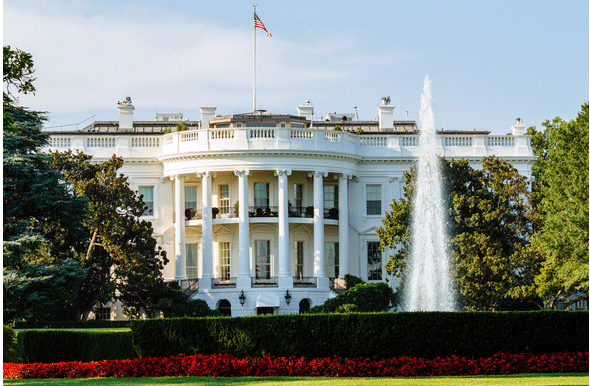
White House Climate Preparedness Task Force Releases Recommendations and Tools

Theo Spencer, Senior Advocate, Climate Center, New York
Hopefully, the momentum is growing.
The Obama Administration has made clear we’ve got to prepare for the impacts created by the carbon pollution we’ve already dumped into the atmosphere, not just slash the amount of that pollution.
The President’s State, Local, and Tribal Leaders Task Force on Climate Preparedness and Resilience rolled out its recommendations recently, and the White House announced a new user-friendly online ‘toolkit’ to help the public and decision-makers.
This is a big deal not necessarily just because of the details, but because it helps prove the US is taking comprehensive, concrete steps to deal with climate change, which in turn has spurred other top emitters into action.
Last week saw a groundbreaking announcement by China to have its emissions “peak” no later than 2030. The US also upped its ante, committing to cut carbon pollution between 26 to 28% below 2005 levels by 2030, essentially doubling the previous pledge of 17% reductions below 2005 levels by 2020. (A key element of these efforts is the President’s plan to cut carbon pollution from power plants, the single largest source in the US).
The excuse many American elected officials and foreign leaders have used not to take comprehensive action is that the world’s top three emitters — (1) China, (2) USA, (3) India — haven’t. Now the big two are (more) firmly on the record.
With the Task Force announcement, now we also have a concrete suite of actions to prepare for the impacts of climate change. Hopefully they will spur similar meaningful actions in other countries, and be just the beginning of serious US movement. When the US acts, it prompts others to do the same.
President Obama created the task force last year as part of his Climate Action Plan. It’s made up of Governors, Mayors, county executives and Tribal leaders from across the country who are experiencing climate change impacts ranging from more severe droughts and wildfires to record heat waves and damaging storms. (You can read my colleague Rob Moore’s blog on the announcement here).
Task Force members note:
In 2012 alone, the cost of weather disasters exceeded $110 billion in the United States, and climate change will only increase the frequency and intensity of these events. That is why, even as efforts to reduce greenhouse gas emissions continue, communities must prepare for the impacts of climate change that can no longer be avoided.
There’s some very good stuff amidst the recommendations and the smorgasbord of web tools, maps, reports, test cases, scenarios, risk factors etc that make up the toolkit. There also seem to be some contradictions. It’ll take a little more time to wade through it all, but here’s an overview.
Recommendations
Task force members spent a year canvassing their constituents and territories to figure out how the Federal Government should modernize programs and policies to incorporate climate change, incentivize and remove barriers to community resilience, and provide useful information and tools.
They ended up with seven cross-cutting themes:
Building resilient communities
Improving infrastructure preparedness
Ensuring the resilience of natural resources
Preserving human health and supporting resilient populations
Supporting climate-smart hazard mitigation and disaster preparedness and recovery
Understanding and acting on the economics of preparedness
Building capacity to leverage more climate-smart actions.
The recommendations call for “requiring consideration of climate-related risks and vulnerabilities as part of all Federal policies, practices, investments, and regulatory and other programs.” The report acknowledges this certainly hasn’t always been the case, resulting in “projects that may not be appropriately designed to withstand or address potential climate-related impacts.”
The Task Force also calls for things like the requirement that all federally funded transportation, water, energy, and other infrastructure investments include evaluation of natural infrastructure to address coastal protection, stormwater runoff and flooding problems.
Toolkit
The toolkit is being rolled out in phases. Today it was coastal flood risk and food resilience (e.g. you can see how future drought conditions would affect regional crop growth). In the coming months, it will be updated to address additional sectors such as water, ecosystems, transportation and health. The site is meant for both regular people and professionals, and includes things like dozens of case studies featuring step-by-step examples of how “real-world decision makers have used these tools, lessons learned, and best practices.” It centralizes--and (hopefully) simplifies--vast amounts of data and resources, like those available through the Climate Data Initiative and the National Climate Assessment from many different federal agencies.
And therein lies one of the potential problems. The site was developed by the National Oceanographic and Atmospheric Administration (NOAA), and one of the cool new tools you can use allows you to look at different climate change scenarios by overlaying up to six feet of sea level rise on zoomable maps of coastal areas. This should be really helpful for state and local officials. But the problem is, those same officials are supposed to rely on flood plain maps created by the Federal Emergency Management Agency (FEMA) that don’t factor in climate change in setting things like certain key building codes and standards. And the federal government itself relies on these non-climate-informed maps to determine which properties are eligible for federal flood insurance.
The toolkits website notes that it offers:
…hard-to-find data and information regarding the flood risks due to various possible scenarios of sea level rise. Community planners can assess what infrastructure is vulnerable under these conditions, and the tool enables business- and homeowners along the coasts to make decisions regarding their livelihoods and see how rising sea levels may affect them in the future.
A slider bar is used to show how various levels of sea level rise will impact coastal communities. It is distinct from viewers provided by the Federal Emergency Management Agency (FEMA) because, unlike the FEMA tools that indicate what areas have flooded in the past, the Sea Level Rise and Coastal Flooding Impacts Viewer shows potential future inundation from daily tides along U.S. coasts if global sea level rose up to six feet.
Fortunately the federal government is beginning to recognize such disconnects. FEMA for example is now calling on states to factor climate change into the hazard mitigation plans they must submit to be eligible for federal disaster relief (thanks in part to NRDC’s advocacy!).
Hopefully this momentum will continue to build, across the country, and across the world.





